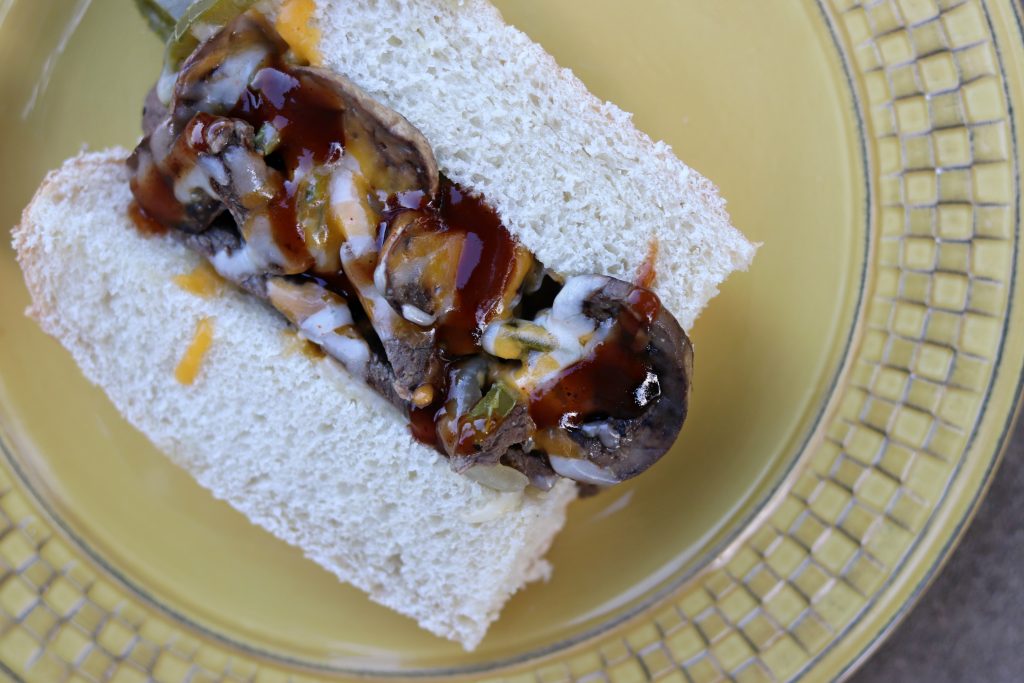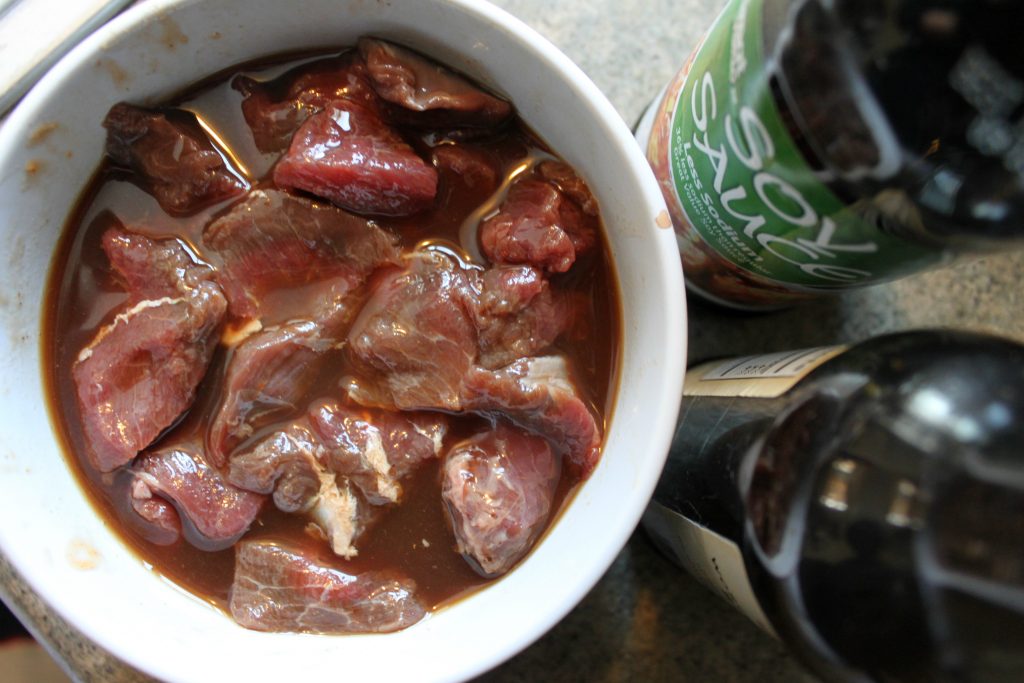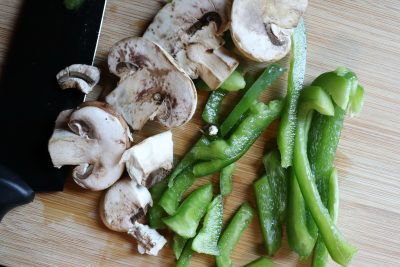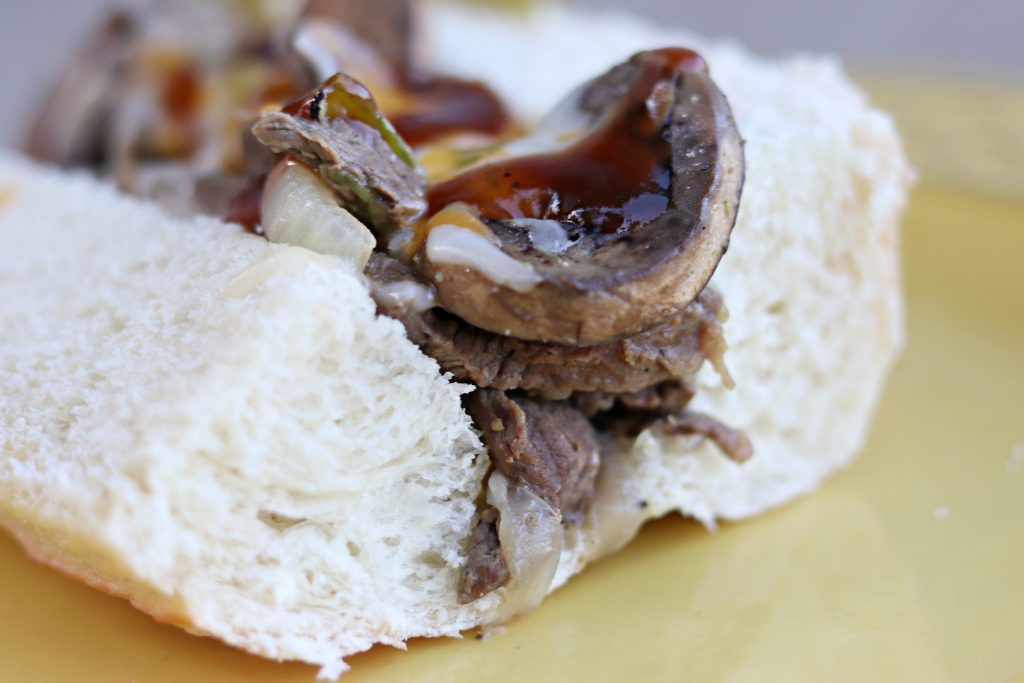There’s a lot of science behind creating the perfect venison cheese steak, from thinly sliced meat to slowly cooked onions.
 Venison sandwiches can be a thing of beauty, but they can also be a nightmare. There’s a fine line between the two when it comes to deer, and it’s usually crossed when the lean meat goes from tender to leather.
Venison sandwiches can be a thing of beauty, but they can also be a nightmare. There’s a fine line between the two when it comes to deer, and it’s usually crossed when the lean meat goes from tender to leather.
For venison cheesesteaks, the solution for creating a Philly that’s as good as beef is simple: use thinly sliced meat. The thinly sliced meats help in two big ways. For one, it’s easier to cook to medium rare when the meat is so thin that just a change in color to the outside signifies that it’s done. Secondly, thin meat allows for better marinating.
To better understand why thinly-sliced meat is superior for marinades, let’s consult science. Before we do that, imagine all the recipes you’ve used in the past that call for marinades. You’ve probably noticed that the roasts and bigger cuts of meat don’t gain much flavor, even after soaking for days. This is because the surface area is the most important factor for getting a marinade to work.
Some argue that marinades help with tenderizing, too, but this is another common misconception. The reality is that even the best marinades only penetrate about 1/8 inch into a piece of meat. As noted by professional chef Russ Parsons, this often leaves marinated meat with meek results.
Catherine Hu, a food science writer, agrees with Parsons, pointing out that the act of marinating is adsorption, not absorption. Adsorption is where liquid adheres to the surface of an object, while absorption is where a liquid penetrates the object. Since the liquid of a marinade is only making it surface deep, regardless of soak time, you’re gaining little flavor or tenderizing.

Because of this, meat that is very thin with a lot of surface area is about the only time it’s practical to enlist a marinade. Even thin meat marinades aren’t foolproof, though, as it’s best to stick with salty, watery soaks, rather than oily or acidy ones. Oil marinades simply don’t do anything because meat is already about 75-percent water, and oil and water just don’t mix. Marinades that are heavy on acids will do some “tenderizing”, but it’s really just cooking the surface of the meat while it’s soaking and creating a mushy product.
For slicing your meat, it’s best to leave the roast or loin that you choose slightly frozen. This gives the meat some firmness that allows for cleaner knifework that thawed out cuts can’t produce. To produce that perfect slicing temp, a night of sitting in the refrigerator after coming out of the freezer will work. The thickness you’re looking for should resemble that of muscle jerky, being thin enough to make a marinade work, yet thick enough to give your sandwich some substance.
As for the rest of the ingredients, there’s more science wisdom to be known when it comes to creating the perfect caramelized onions. Most are familiar with this culinary term but don’t realize what it actually means. Caramelizing is more than just sautéing, it’s the slow process of drawing out the best flavors of yellow and purple onions. When caramelizing onions, you want to cook them low and slow, with just enough oil to keep them from sticking to the pan.
This allows the polysaccharides and disaccharides, or large sugar molecules, to break down and turn into monosaccharides, or smaller sugar molecules. This transformation from bitter, raw onions to sweet, soft ones is by the slow addition of heat, whereas going too fast will make them blander. It’s a crucial step in creating the perfect Philly, and there’s no arguing with that science.
 Marinade:
Marinade:
- 2 tablespoons of honey mustard
- 2 tablespoons of Worcestershire sauce
- ½ teaspoon of garlic powder
- ½ teaspoon of onion powder
- ½ teaspoon of salt
- ½ teaspoon of crushed red pepper
Ingredients:
- 1 lb. of venison loin or roast
- 2 cups of sliced green pepper
- 5 cups of sliced onion
- 2 cups of sliced mushrooms
- 2 cups of shredded pepper jack cheese
- 8 large brat buns or sub rolls
STEPS:
- Slice roast or loin into very thin pieces. Length doesn’t matter, but thickness does.
- Seal the venison in a Ziploc bag with marinade for three hours.
- In a shallow pan with olive oil, caramelize onions by slowly stirring them on low heat for 30 minutes.
- In a shallow pan with olive oil, sauté green peppers and mushrooms for three minutes on high, or until soft.
- In a shallow pan with olive oil, sauté marinated venison for two minutes.
- Combine the onions, green peppers, mushrooms, venison, and cheese on a bun and put in the oven at 400 degrees for three minutes.
- Put on optional condiments, like bbq sauce, mayo, or mustard. Now, enjoy!

Comment below with your favorite wild game recipe.
Check out the top 7 states for public land whitetails, click [track-link url=”https://outfitter.media/top-seven-states-public-land-whitetails/” campaign=”Whitetails” target=”_blank”]here[/track-link].
To find more information about public land and hunting regulations, click [track-link url=”https://www.nssf.org/hunting/where-to-hunt/” campaign=”WheretoHunt” target=”_blank”]here[/track-link].